George W. Hart
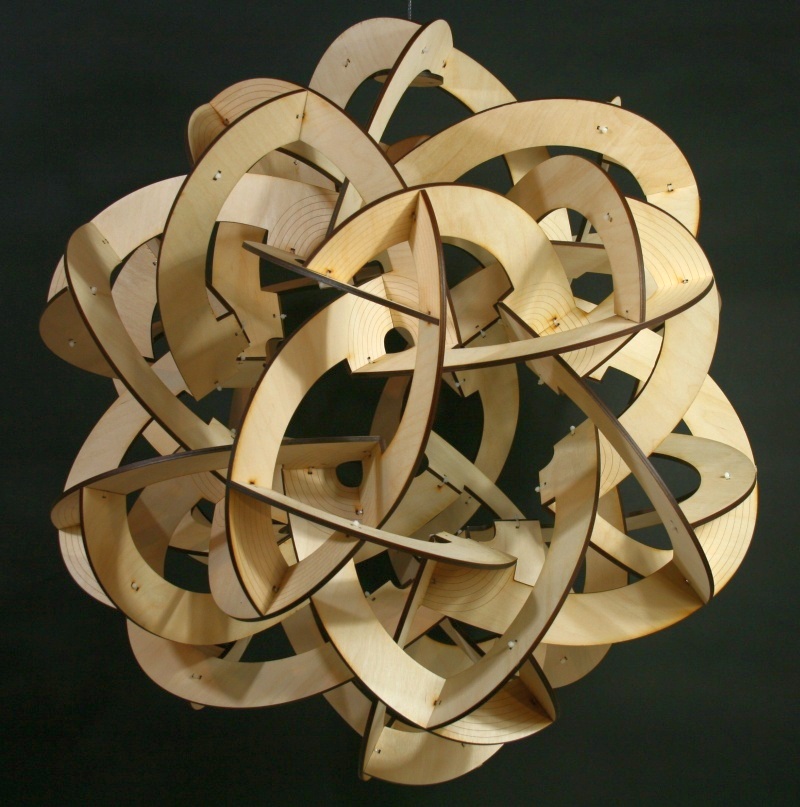
I named this sculpture Celebration
of Mind in honor of Martin
Gardner (1914-2010), who was a great influence on my
intellectual development. Fans of Martin Gardner get
together every year around his birthday (October 21) at
events all around the world to spread the joys of
recreational mathematics and related subjects. These Celebration
of Mind parties can take many forms depending on the
interests of the participants. For the 2013 Celebration of
Mind at Princeton University, I designed this 30-inch wood
sculpture for the participants to assemble.
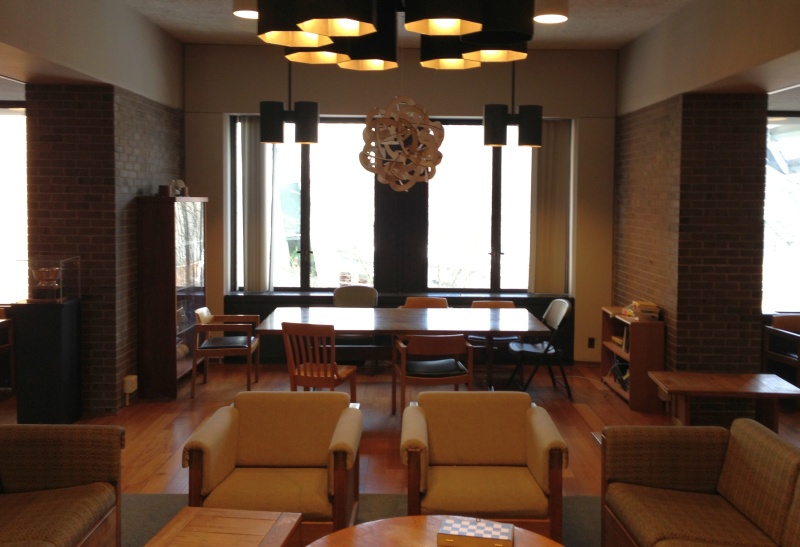
After the assembly, the sculpture was installed over a table in the common room of Princeton's math department, in Fine Hall. For many years a CD sculpture of mine, propello-octahedron, was hanging there---see the image halfway down this page---but it eventually deteriorated. So I am happy to have had the opportunity to replace it with a sculpture made of sturdier material.
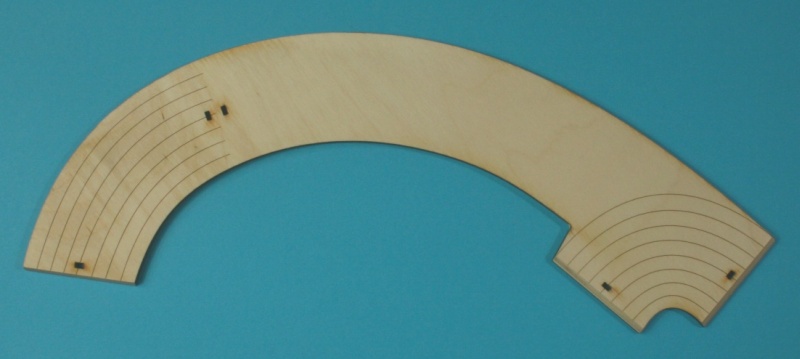
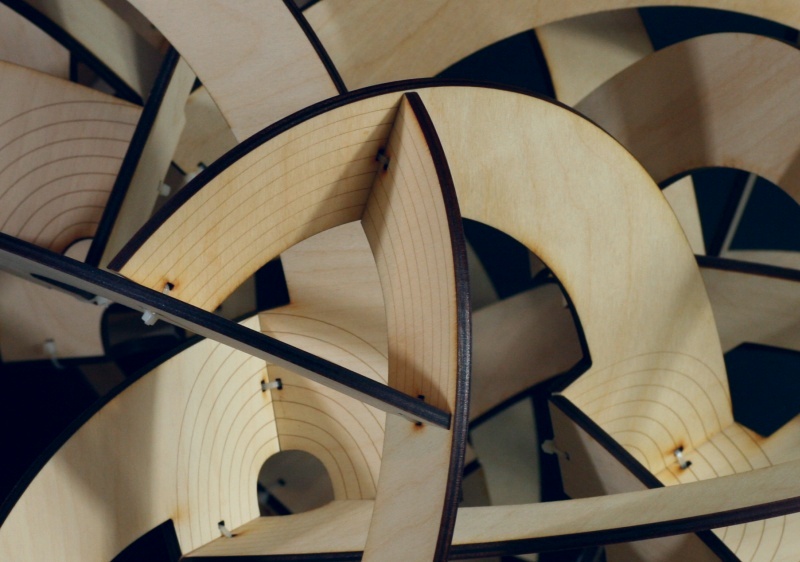
Everything holds together with small cable ties through the holes, which adapt automatically to the angles between the planes. I've discovered that this is a fast, strong way to assemble complex parts with a group. This close-up image also shows how the laser-etched arcs serve to entice the viewer to come close and look inside. There is a circular opening directly behind each triangular opening.
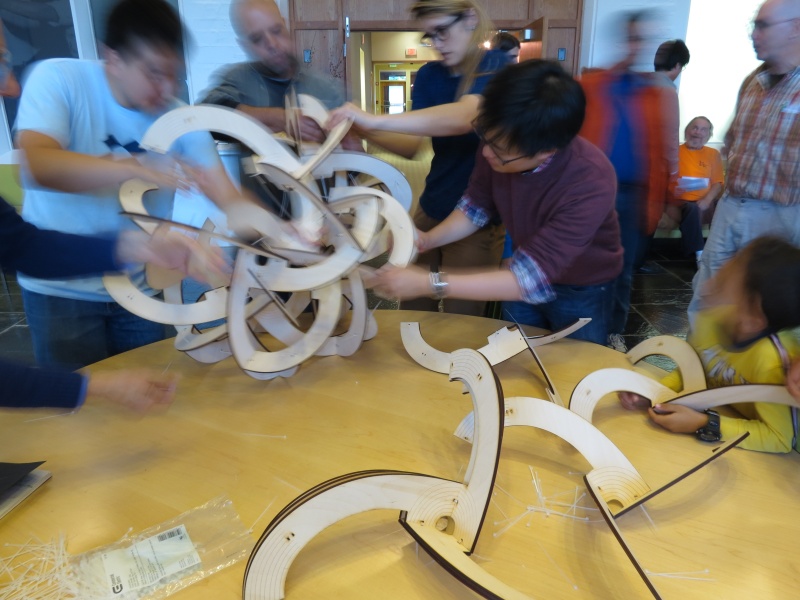
Assembling the parts at the Celebration of Mind party took
about an hour and a half with a couple of dozen people
working as a group. In the spirit of Martin Gardner,
who loved puzzles, I let the group puzzle-out the solution
of how the parts go together. Given the shape of the part,
there is only one possible way for everything to fit snugly
without gaps. So, although it is very intricate, I
knew they would figure it out.

It ends up very rigid, light, and open, simultaneously
geometric and organic. Some people told me it reminds
them of a 1950's model of the atom, with electrons orbiting
the nucleus. Others said it looks more like a giant brain
with a highly convoluted surface. Whatever it looks
like, I am very happy with the result.
Thank you to everyone who worked on assembling it with me and especially Vickie Kearn of Princeton University Press who organized this Celebration of Mind event. Thank you also to Ron Dubren who took many photos, including the last two images on this page and the time lapse portion of the video linked above. And thank you also to John Conway and everyone in the Princeton Mathematics Department, who arranged for its installation there.

After the assembly, the sculpture was installed over a table in the common room of Princeton's math department, in Fine Hall. For many years a CD sculpture of mine, propello-octahedron, was hanging there---see the image halfway down this page---but it eventually deteriorated. So I am happy to have had the opportunity to replace it with a sculpture made of sturdier material.

The sculpture is constructed from sixty
identical components. Each is made of laser-cut,
6-mm-thick, birch plywood with some arcs laser-etched as
illustrated above. There are five small rectangular
openings for cable ties to pass through. And I
beveled the three straight segments so the parts butt
together at the proper dihedral angles. I cut the
parts at my studio in New York and brought them with me
unassembled.

Everything holds together with small cable ties through the holes, which adapt automatically to the angles between the planes. I've discovered that this is a fast, strong way to assemble complex parts with a group. This close-up image also shows how the laser-etched arcs serve to entice the viewer to come close and look inside. There is a circular opening directly behind each triangular opening.


To see a time-lapse movie of the
assembly and better understand the design, see these this
video.
There is a high-resolution image of Celebration of Mind here.
There is a high-resolution image of Celebration of Mind here.
Thank you to everyone who worked on assembling it with me and especially Vickie Kearn of Princeton University Press who organized this Celebration of Mind event. Thank you also to Ron Dubren who took many photos, including the last two images on this page and the time lapse portion of the video linked above. And thank you also to John Conway and everyone in the Princeton Mathematics Department, who arranged for its installation there.